If you are learning about robotic mowers with GPS for the first time, you will probably find it difficult to get a good overview. This is not surprising, since there are different techniques used and the available information is patchy at best. I have dealt with the topic in detail and would like to shed some light on the subject of robotic mowers with GPS in this article.
GPS stands for Global Positioning System and is used to determine geographical position by satellite. It is used in many devices, such as smartphones, or on-board navigation systems in cars. Some robotic mowers are also equipped with GPS, whereby there are two different areas of application:
While GPS navigation helps the robotic mower to find its way around the yard and thus mow the lawn in a more energy-efficient way, GPS tracking makes it possible to determine the position of the robotic mower at all times and to set up an anti-theft device.
In this article I will discuss both areas of application. For better clarity, the article is therefore divided into two sections. The first deals with GPS navigation, while the second deals with GPS tracking.
Contents
How do robotic mowers with GPS work?
Robotic mowerswith GPS use the Global Positioning System to determine their position with an accuracy of about 3 meters. For this purpose they have a small sensor installed that can receive signals from GPS satellites. From the distance to the satellites it can then calculate its position on earth. If you are interested in how exactly this works, I will explain in more detail below.
The robotic mower uses this information in two ways, namely for navigation on the lawn and for tracking. The GPS-supported navigation is used for better route finding on the lawn and optimization of the mowing process. The tracking is more for the user. They can track the location of the robotic mower on their smartphone or PC, or even set up an anti-theft system that sounds an alarm and informs its owner when the robotic mower leaves a certain area. This technique is called GeoFencing. So there are these two applications for GPS:
- Navigation on the lawn
- Tracking and theft protection
A: Robotic Mower with GPS navigation
How do robotic mowers work without GPS navigation?
The chaos principle
Robotic mowers without GPS navigation have no way of determining what the surface of the lawn actually looks like. They therefore simply drive over the lawn at random. The whole thing looks pretty chaotic at a glance, but over time every spot gets mowed.
The robotic mowers stop at the boundary wire and then continue in a different direction. Some robotic mowers do not have a boundary wire, but have a sensor that detects the end of the lawn. The chaos principle is the same. The entire lawn is simply mowed at random.
The problem here is that some areas are mowed very frequently, even if they have already been mowed, and other areas, especially those that are difficult to reach, are mowed less frequently.
Methodical mowing
Chaos, of course, is not the most efficient method. Hence, there have been numerous attempts to come up with a robotic lawn mower that has a system for mowing the lawn, many of which failed. It’s much more difficult to come up with such a system, because the robot needs to know its exact position in the yard at all times, which is not easy to do.
The only system that has been on the market for some time and is reasonably successful is BOSCH’s “Logicut” system. However, their robots are only sold in Germany.
Nonetheless there are a number of new models in the making by some inventive companies that use the latest available technologies available to achieve exactly this: A robotic lawn mower that mows the yard efficiently with a system.
One of these is called “Toadi”, a robot that uses a 4K-camera and AI to navigate the yard. The other one is the “iRobot Terra”, a famous brand for robotic vacuum cleaners and other kinds of service robots.
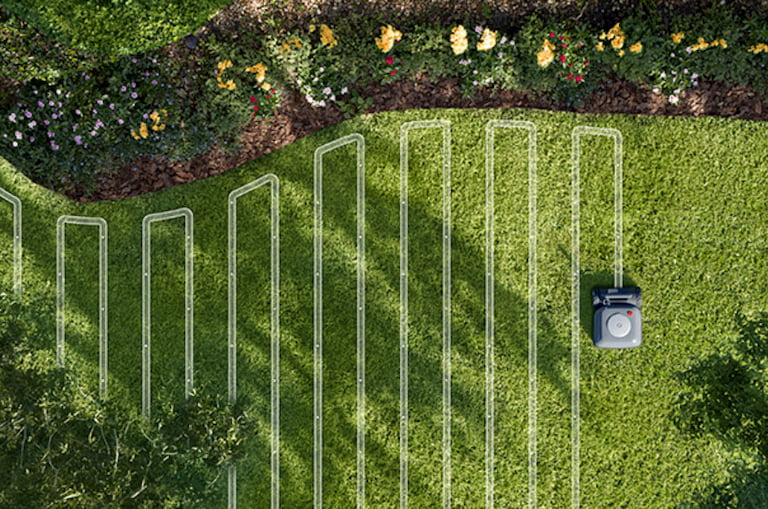
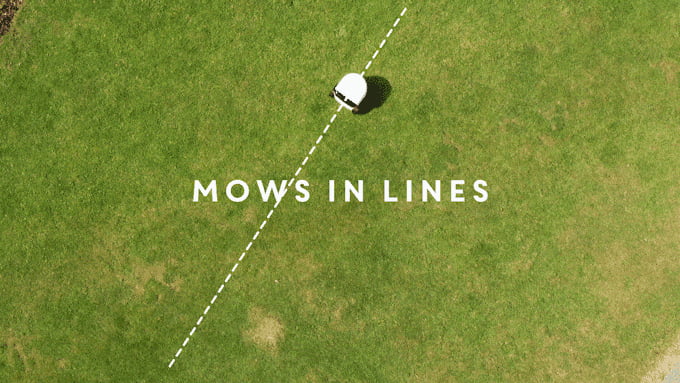
However, both these robotic lawn mowers can still not be bought online (2020). Also iRobot has postponed the release of the Terra mower for an indefinite time, because of Covid-19 among other reasons.
Two common systems: When mowing the lawn, there is mowing by chance (right) and mowing with a method (left). There is also a third method where navigation is supported by GPS.
Robotic mowers with GPS work slightly differently. In principle, mowing with GPS navigation includes the advantages of both systems, mowing by chance and mowing methodically.
If you want to know exactly what the differences between methodical mowing and random mowing are, and what the advantages and disadvantages of each system are, read this article I wrote.
How robotic mowers work with GPS navigation
Now that you know how robotic mowers normally work, it is certainly easier to understand what is so special about robotic mowers that use GPS navigation. In the beginning, they drive over the lawn in a random pattern just like their “chaotic” relatives and mow the lawn in the process.
A guide wire, which is laid through the yard, is usually used to further facilitate navigation at the beginning and to reach even remote parts of the yard or separate lawns.
At the beginning GPS-navigated robotic mowers collect data
After driving around more or less blindly for a while, just guided by the guide wire and the boundary wire, the robotic mower has at some point collected enough coordinates to create a digital map of the yard. Depending on the complexity and size of the yard this takes about 1 to 4 days.
With the help of GPS data, the robotic mower not only has an approximate idea of the shape and size of the lawn, it also remembers the last time it mowed each area of the lawn. Now it is beginning to intelligently optimize its mowing routes.
Areas that the robotic mower has not mowed will be targeted by the robot. At the same time, it avoids mowing the same area several times. Even after the first 4 days, the robotic mower continues to learn independently and optimize its mowing behavior.
Robotic mowers with GPS navigation have many advantages
Thanks to its digital map, the mower can organize its routes while mowing in a very intelligent and advanced way. With the help of GPS information, it can independently target areas as soon as its data tells it that it is time to mow there again. It can also find the individual areas of the yard faster, even in very complex yards.
This results in a whole range of advantages. On the one hand, the mowing time is significantly reduced, as the robotic mower mows precisely those areas that need to be mowed. Less mowing time means less energy consumption and less wear and tear on the battery and blades and the mower as a whole.
It also means that you can have the mower mow in a smaller time window during the day. For example, if your neighbor is bothered by the robotic mower. However, most robotic mowers with GPS are top class devices that work particularly quietly – almost all models operate below 60 dB.
Another advantage is that no tracks are formed in frequently-driven locations, as GPS navigation avoids driving too frequently in the same place.
Are there any disadvantages?
One of the biggest “drawbacks” that might prevent you from buying such a device is the price. Robotic mowers with GPS often cost much more than conventional robotic mowers. Quite a few cost over $2000. However, this is not just because of the expensive technology. Robotic mowers that are equipped with GPS usually belong to the high class models that are also equipped with a number of other refinements, which further increases the price.
Of course you also save some money, because robotic mowers with GPS are more energy efficient. In addition, the high-priced robotic mowers in particular are also of excellent quality. Some first generation robotic mowers have been running for 20 years. Of course, nobody can say whether the robotic mower will last that long, but one should calculate with a long-term investment.
Another disadvantage could be the somewhat more complicated setup of the robotic mower. However, this should not discourage you. All functions are described very precisely in the instructions and it is a one-time effort.
Advantages and disadvantages of robotic mowers with GPS navigation
Advantages
Disadvantages
Which robotic mowers navigate with GPS?
GPS navigation is a relatively rare function among robotic mowers. Only very few robotic mowers have the ability to navigate via GPS. In North America, the manufacturers Husqvarna and Robomow have made a name for themselves. In the next point you will get a short list of different models with an approximate price, so you can get a rough overview.
What do robotic mowers with GPS cost?
Robotic mowers with GPS navigation are pricey; many cost over $2000. There are also some slightly cheaper models, but you will hardly get away for less than $1,000 if you buy a new one.
The high cost is not only due to the expensive technology. Robotic mowers with GPS navigation are high-class models that are usually equipped with a number of additional functions beyond GPS that average robotic mowers do not have.
Here is a short overview of different models with approximate price (without guarantee).
| Model | Approximate price* |
|---|
Can robotic mowers with GPS navigation do without a boundary wire?
Absolutely not! GPS is still far too inaccurate these days. When mowing at the edge, the robotic mower has to mow very precisely so that it does not accidentally drive over a flower bed or into a pool. Even under optimum conditions, the robotic mower only achieves an accuracy of up to 3 meters.
A 3-meter inaccuracy quickly leads one to wonder where the flower bed has disappeared to.
Furthermore, the robotic mower does not have any information about the lawn at the beginning. It must first collect the coordinates, during which it drives over the lawn just as chaotically as simpler models. The boundary wire is therefore absolutely necessary.
There are a few robotic mowers that navigate exclusively with GPS. However, these use a special system called Differential GPS and are designed for extremely large areas of up to 7 acres, as it is technically almost impossible to use a boundary wire for such areas. In addition, robotic mowers with DGPS are extremely expensive and are priced in the 5-digit range.
So far there are no robotic mowers for private use that navigate exclusively with GPS! Although there are robotic mowers that do not need a boundary wire, they do have special sensors that detect the edges of the lawn. Some robotic mowers for very large sports or park facilities use DGPS and do not need a boundary wire.
B: Tracking robotic mowers with GPS
How does GPS tracking differ from GPS navigation?
GPS tracking is more about the exchange of location information between the robotic mower and its operator. GPS tracking, unlike GPS navigation, is used to provide you with information about where the robotic mower is located. For example, you can see on your smartphone or PC where the robotic mower is currently mowing.
This also allows you to create mowing profiles on which you can see which routes the robotic mower has chosen, and which zones it has already visited and how often. However, this is not a standard function of robotic mowers with GPS.
You can also use GPS tracking to receive an alarm via SMS or app when the robotic mower leaves its predetermined area. This can also be very useful for theft protection.
Important: GPS navigation and GPS tracking are two independent functions. A robotic mower with GPS navigation does not necessarily have GPS tracking and vice versa.
What are the advantages of GPS tracking
The following advantages are offered by GPS tracking
- GeoFencing for theft protection
- GPS positioning (locating the robotic mower)
- Helpful to police in case of theft
GeoFencing offers increased security protection
The biggest advantage of GPS tracking is geofencing. Via SMS or app you will receive a message on your mobile phone as soon as the robotic mower leaves the mowing area, for example because someone tries to steal it, or it has crossed the boundary wire due to a defect.
This function can also be used to lock the robotic mower and to sound an alarm if it is no longer within the coordinates of the yard. It is therefore called geofencing (a combination of geographic and fence), since a virtual fence is created around the yard using coordinates that the robotic mower is not allowed to cross.
GPS tracking often also provides other useful functions. Husqvarna’s GPS module, for example, allows the robotic mower to send all essential commands from a smartphone.
It can be programmed, adjusted and switched on or off from the comfort of your sofa. If you are at work and notice that a big storm is approaching, you can simply tell your mower via app to return to the charging station – and if available to its safe robotic mower garage.
GPS tracking
The second advantage is the positioning via GPS. This makes it possible to see where the robotic mower is at any time from your smartphone or PC. With GPS positioning, it can also be located if it has been stolen.
If the robotic mower has been stolen, you should go to the police immediately and give them access to the GPS location. Here the police are particularly willing to help, as locating stolen goods via GPS is quite easy – a certain self-interest also exists for the law enforcement officers, as stolen devices with GPS trackers are usually a simple way of improving their own reconnaissance statistics. In most cases, the stolen goods are recovered within a few hours.
The only disadvantage of GPS tracking is the slightly higher price.
What possibilities are there for tracking via GPS?
Robotic mower with built-in GPS tracking
There are a few robotic mowers that already have GPS tracking, or can be easily retrofitted with one. Here too, the manufacturers Husqvarna and Ambrogio dominate the market. Many robotic mowers that already have GPS navigation, for example, also have GPS tracking or can be easily retrofitted with it.
However, these robotic mowers are in the upper price segment. If you want to save some money, or if you already have a robotic mower without GPS tracking, you can easily retrofit it. More about this below.
Tracking with Automower Connect from Husqvarna
Automower Connect is both an app and a module for the robotic mower, which is available for some Husqvarna models. It is used for communication between the robotic mower and its owner.
The models Automower 310, Automower 315, Automower 320, Automower 330X, Automower 420, Automower 430X, Automower 440 and Automower 450X can be retrofitted with the Automower Connect Module and can then be controlled via the Automower Connect App.
Using the app, you can send commands to your robotic mower from your smartphone or tablet, such as “Return to the charging station”, “Start mowing” or “Stop”. Commands via SMS are also possible. At the same time, the lawn robot will report if it has left the mowing area unplanned, for example in the event of theft or simply if the boundary wire has not worked as it should. It is also possible to see information about the load status, the current position or the next scheduled mowing operation.
The robotic mower is equipped with a SIM card, which is included in the scope of delivery of the module. For all robotic mowers purchased from Spring 2016 onwards, Husqvarna will cover the cost of the SIM card and data volume for the next 10 years. Alternatively, the robotic mower can be equipped with its own SIM card.
The Automower Connect module works together with the GPS module, but only serves as a communication module. The GPS navigation cannot be influenced by this and is a separate system.
Here’s a short overview in a video of what the Automower Connect App can do.
Can GPS tracking be retrofitted to the robotic mower?
Do It Yourself with a GPS tracker
Probably the best way to retrofit your robotic mower with GPS tracking is with trackers that can also be used for cars and can be located at any time. You can then attach them under the outer hood of the robotic mower.
They stay pretty hidden unless the hood of the robotic mower is lifted. You could also place the tracker under the actual frame, where it would be much more difficult to find, but you should not take apart the mower as a rule, otherwise the warranty would expire. Here it depends on which conditions the dealer has attached to the warranty.
A common tracking device that is used by many robotic mower owners to retrofit their robotic mower with GPS tracking is the Tracki GPS-Tracker (click here to see on Amazon). This is also often used for cars. It can be located even if the device is in an underground car park, for example. After about 400 days, the battery of the tracker must be recharged, as it is of course not connected to the power supply of the robotic mower.
This device is a great way to locate the robotic mower afterwards in case of theft, or simply to see how the lawn is driven over by the robotic mower. However, the robotic mower cannot use a post-production GPS tracker to navigate. This would require a GPS device that is connected to and communicates with the electronics of the robotic mower.
Tracking by attached smartphone
Some clever owners of robotic mowers have also come up with the idea of simply attaching an old smartphone under the hood and logging the progress with a tracking app, such as GPS Logger. When doing so, you should make sure that the phone is protected from water, for example by packing it in a small bag. However, this method is best suited for just getting a rough idea of how the robotic mower drives around the lawn.
Although some smartphones can also be located from a PC, the battery of smartphones is not known to last very long. In addition, the positioning system of smartphones is often somewhat inaccurate.
Technical Background
How does the robotic mower find its position via GPS?
Robotic mowers with GPS are able to determine their position with an accuracy of about 3 meters. For this purpose, the robotic mower receives signal from at least 4 satellites. The satellites transmit their current time to the robotic mower. The signal moves at the speed of light, but needs a few billionths of a second to reach the robotic mower.
From the difference between the time sent and the time the signal is received, the robotic mower can calculate the time it took the signal from each satellite to reach the robotic mower. From this it can determine its distance to each satellite, and thus its rough positioning on the ground.
There are a whole range of complicating factors, such as atmospheric errors, gravitational effects, deviations in the satellite’s position in orbit, signal reflections on the earth’s surface, conversion errors and inaccuracies of the clock at the receiver. The clock would have to be a precisely working atomic clock for the mower’s position to be calculated completely accurately. The possibility of any of these meddling factors requires the use of a variety of correction techniques to compensate to some extent.
But this is only possible to a certain extent. This also explains why it is so difficult to determine the position more precisely than 3 meters. In special cases and with further complex techniques this is possible, but usually not common in civil use.
The following video explains the whole thing once again.
For whom are robotic mowers with GPS worthwhile?
GPS navigation
Robotic mowers with GPS navigation can flex their better area performance particularly well on large and especially complex areas of lawn. Conventional robotic mowers often do not succeed in mowing the different zones in a balanced way in winding yards or yards with several areas.
Some robotic mowers with a guide wire have the function of defining different areas and setting percentages so that the robotic mower gets an idea of the size ratio of the areas. You can save yourself this work with a robotic mower with GPS navigation. In addition, mowing any area in general works better with GPS.
Even if you are afraid that your robotic mower will drive over certain areas too often and thus possibly cause damage to the lawn, for example by leaving tracks, you should think about buying a robotic mower with GPS navigation.
Last but not least, environmentally conscious people who want to use as little energy as possible can consider investing in a robotic mower with GPS navigation, as it can cope with the area faster than other robotic mowers and is therefore probably the most energy-efficient method of all for mowing the lawn – apart from the hand mower, sickle and scythe of course.
Suitable for
- Complex lawns
- Large lawns
- Fans of Energy Efficiency
- Technology enthusiasts
GPS Tracking
If you fear that your robotic mower might be stolen, GPS tracking is probably one of the best ways to protect your mower from theft. GeoFencing alerts you if the robotic mower moves too far away from the mowing area, activates the robotic mower alarm and locks it so that no one else can use it.
And not only that. Even if the thief has managed to steal the robotic mower, it can be easily located with the GPS tracking system. If they act quickly, the police can recover the device after just a few hours. It is also easier to prove the theft in an insurance case.
So if experience shows that your neighborhood is a common target for thieves, GPS tracking is a wise investment.
Also those who would simply like to control their robotic mower from their mobile phone often get the possibility to do so with the common GPS modules. These usually come with an extensive app (see Automower Connect from Husqvarna).
Suitable for
- Areas with theft problems
- Areas that are not well protected against theft
- People who appreciate additional comfort (control via app)
- Technology enthusiasts
Conclusion
GPS extends the range of possibilities offered to robotic mowers by a good deal. For example, the robotic mower can collect geographical data about the mowing area and produce a digital map, which enables it to mow the area more efficiently, saving time and energy.
The possibility to track the robotic mower via GPS offers additional protection against theft. The whole thing is rounded off by the geofencing system, which enables the robotic mower to alert its owner as soon as it moves too far away from the property and activates its own locking function.
Of course, there is a price to pay, but if you want to spend a little more on your robotic mower, the information may be worthwhile in any case, especially if you have a large yard.
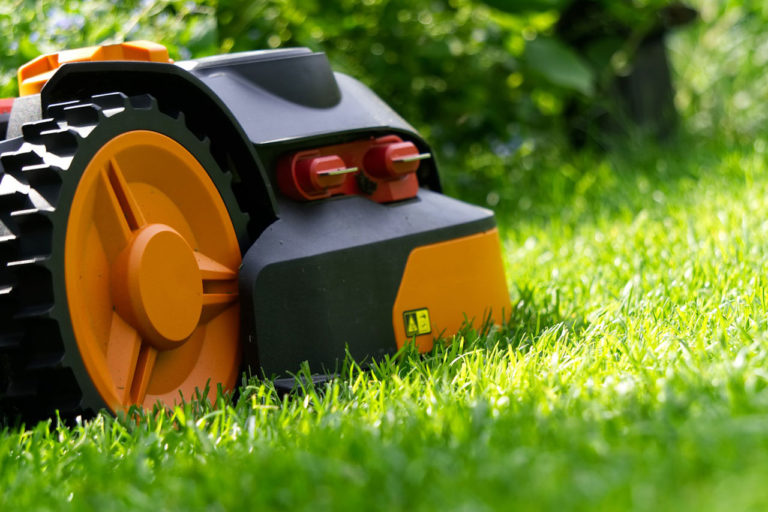

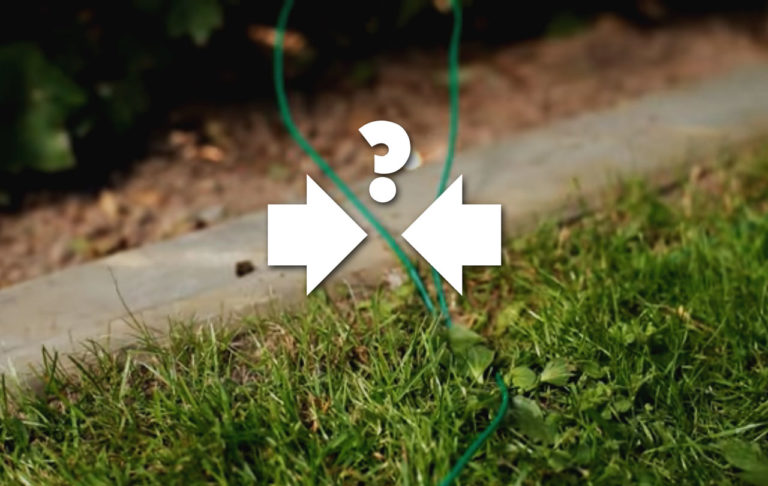
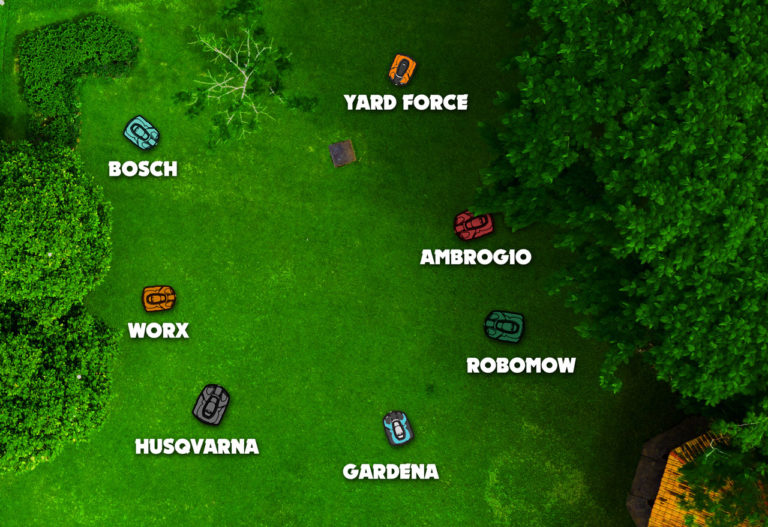
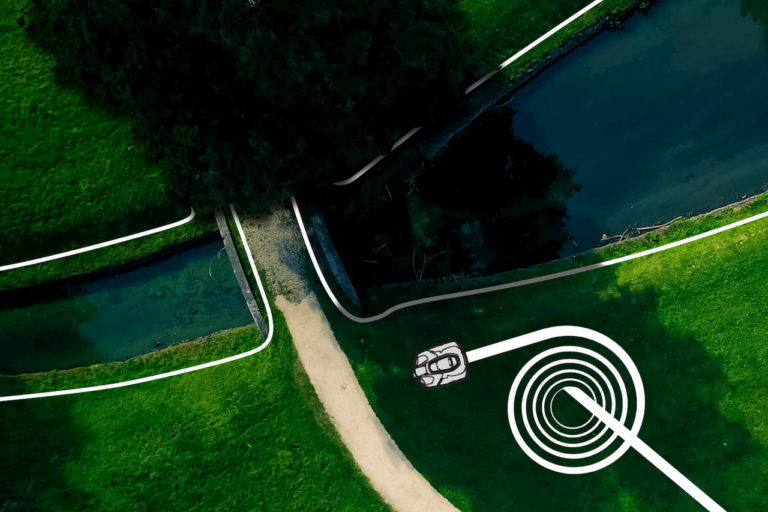
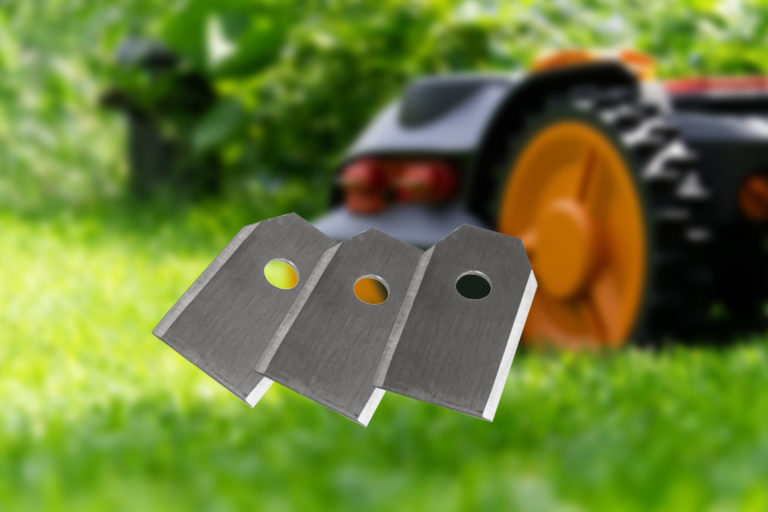
Great article. It’s a shame that the robotic mowers are still dumb these days. I cannot stand watching such robot.
There is one exception … Bosch has a mowing robot that tries to go systematically for years. But it is not perfect. So I’m waiting for a good clever mowing robot.
I have a 430xh husqvarna robomower. It has lost its gps capability. How can it be fixed? By whom? At what cost? Appreciate any help. Thanks.
Your list of models is empty